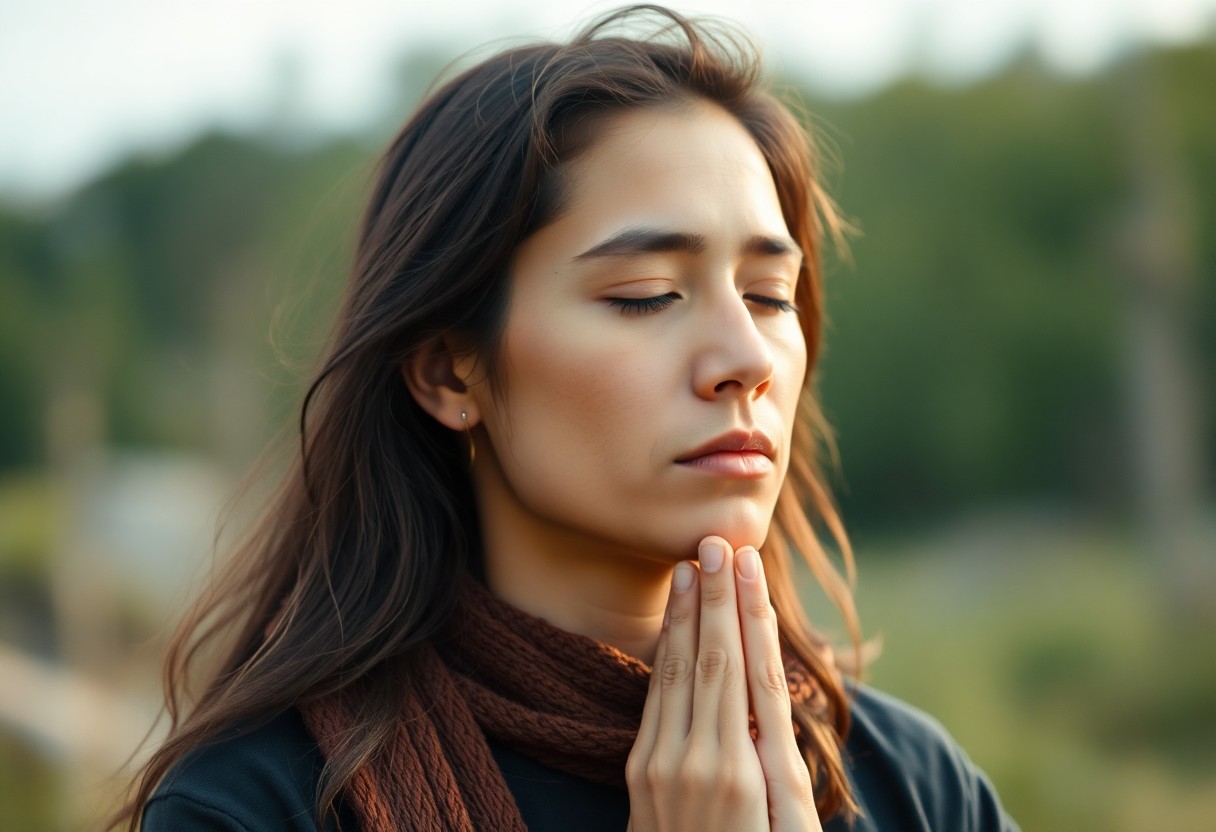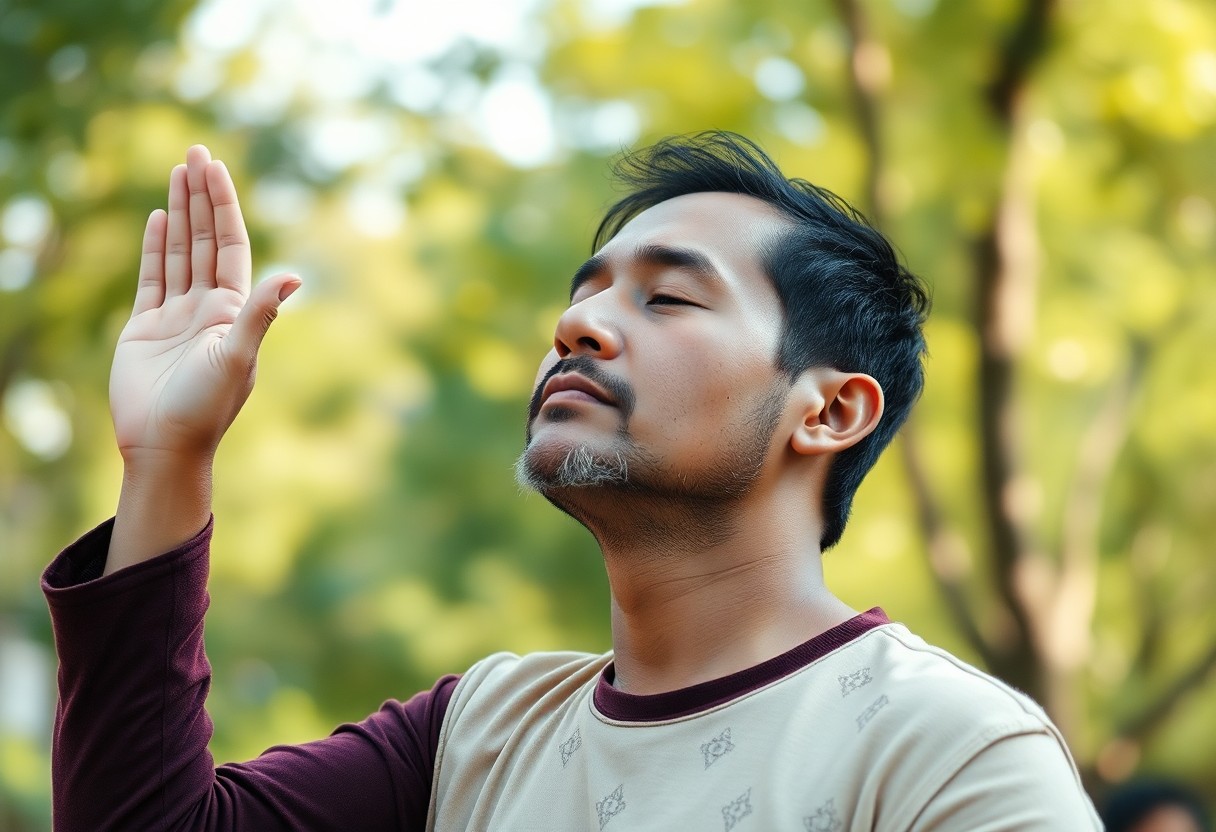There’s a powerful breathing practice called Kapalbhati Pranayama that you can learn to enhance your physical and mental well-being. By mastering this technique, you stimulate your respiratory system, detoxify your body, and improve concentration. However, it’s important to approach it with caution, as improper practice can cause dizziness or discomfort. This guide will teach you how to do Kapalbhati safely and effectively, so you can enjoy its many benefits while avoiding potential risks. Understanding each step will empower you to incorporate this ancient method into your daily routine confidently.
The Science Behind Kapalbhati: How It Works
Neurophysiological Impact on the Body
Engaging in Kapalbhati Pranayama triggers a cascade of neurophysiological responses that benefit your body’s autonomic nervous system. The forceful expirations characteristic of this technique activate the sympathetic nervous system initially, providing a spike in alertness and energy. However, the practice ultimately fosters a balance between the sympathetic and parasympathetic branches, leading to improved autonomic regulation. This balance is reflected in heart rate variability studies, where practitioners demonstrate enhanced parasympathetic tone, correlating with better stress management and cardiovascular health.
By repeatedly forcing expired air out in quick bursts, Kapalbhati stimulates the vagus nerve indirectly through respiratory modulation. This stimulation can promote anti-inflammatory effects by downregulating systemic inflammation markers such as C-reactive protein and cytokines. Additionally, the rhythmic contractions of your abdominal muscles facilitate increased venous return, improving overall circulation. These physiological effects contribute to better oxygen supply and metabolic efficiency at the cellular level, which supports restorative processes throughout your body.
Research also indicates that Kapalbhati influences respiratory rhythms and chemoreceptor sensitivity. As you practice, respiratory centers in the brainstem respond to the controlled hyperventilation and subsequent CO2 reduction by adjusting breathing patterns. This trains your chemoreceptors to become more adaptable, enhancing your body’s capacity to regulate blood gas levels under stress or physical exertion. The resultant respiratory flexibility plays a role in improving endurance and reducing feelings of breathlessness in everyday activities and exercise.
Influence on Mental Clarity and Focus
Your brain’s frontal lobes receive a significant boost during Kapalbhati practice, which is closely linked to enhanced mental clarity and focus. The rapid, controlled expulsions of breath increase cerebral blood flow and oxygenation, delivering more nutrients and energy to neurons responsible for attention and executive functioning. Functional MRI studies demonstrate elevated activity in prefrontal cortex areas after just a few minutes of this pranayama, which translates to sharper cognitive performance and reduced mental fatigue.
Moreover, Kapalbhati engages mechanisms that facilitate the release of neurotransmitters such as dopamine and serotonin, which modulate mood and concentration. This biochemical shift can reduce anxiety levels and promote a calm yet alert mental state. When you incorporate Kapalbhati into your routine, you effectively nurture a neurochemical environment conducive to sustained concentration, making it easier for you to tackle complex tasks or maintain prolonged academic or professional productivity.
Finally, the rhythmic nature of the breathing fosters neural synchronization across different brain regions, enhancing your working memory and processing speed. Regular practice of Kapalbhati has been shown in clinical settings to support people with attention deficit symptoms and cognitive impairments by increasing their ability to filter distractions and maintain task-oriented focus. This quality of breathwork, paired with its stimulating yet grounding effects, equips you with a natural method to optimize cognitive functioning without reliance on external stimulants.
Further exploration of Kapalbhati’s impact on your mental faculties reveals pronounced improvements in mindfulness and introspective awareness. As your breathing stabilizes, the mind tends to settle into a state of heightened sensory perception, allowing you to observe thoughts and emotions with greater objectivity. This dynamic helps minimize reactive patterns in thought processes, ultimately fostering clearer decision-making and emotional regulation throughout your daily experiences.

The Multifaceted Benefits of Kapalbhati
Enhancing Respiratory Function and Lung Capacity
Diving into Kapalbhati’s impact on your respiratory system reveals its powerful ability to improve lung capacity and strengthen respiratory muscles. As you practice the forceful exhalation technique, your diaphragm is actively engaged, promoting better expansion and contraction of the lungs over time. This exercise can help increase the volume of air your lungs can hold, which becomes particularly beneficial if you suffer from conditions like mild asthma or chronic bronchitis. Clinical studies have demonstrated that individuals who regularly perform Kapalbhati show measurable improvements in their forced vital capacity (FVC) and forced expiratory volume (FEV), two key indicators of healthy lung function.
The rapid breathing cycles in Kapalbhati also lead to enhanced oxygen exchange within the alveoli by minimizing dead space ventilation—the portion of air that does not participate in gas exchange. This efficiency translates into better oxygenation of your blood, which can improve stamina and reduce bouts of breathlessness during physical activities. Additionally, the exercise stimulates the cilia lining the respiratory tract, assisting in clearing mucus and foreign particles and reducing the risk of infections in your sinuses and lungs.
For athletes or individuals recovering from respiratory ailments, incorporating Kapalbhati into daily routines can complement medical treatments by boosting overall pulmonary health. By progressively increasing the duration and intensity of practice under proper guidance, your lung elasticity and endurance may significantly improve, enabling you to breathe more deeply and with greater ease in everyday life.
Detoxification and Its Role in Wellness
Your body’s detoxification pathways operate continuously, but Kapalbhati offers a unique boost to this crucial system. The forceful breath expulsions energize the abdominal region and diaphragm, which in turn massages internal organs such as the liver, kidneys, and intestines—organs central to filtering and eliminating toxins. This mechanical action enhances lymphatic drainage and circulation, promoting more efficient removal of metabolic wastes and excess fluids from your body.
Practicing Kapalbhati regularly can stimulate your autonomic nervous system, encouraging parasympathetic responses that support digestion and detoxification processes. By increasing the flow of oxygen and nutrients to your cells, this technique indirectly assists in cellular repair and regeneration, fortifying your body’s natural defenses against environmental pollutants and oxidative stress. In many traditional wellness systems, Kapalbhati is considered a cleansing breath that clears the mind and body, preparing you for deeper meditation or physical activity.
The rhythmic nature of Kapalbhati also activates the vagus nerve, which plays a key role in reducing inflammation and regulating immune responses. This neural engagement aids in lowering cortisol levels—a hormone associated with stress—thereby reducing toxic buildup related to chronic stress conditions. The collective detox effects of Kapalbhati can leave you feeling revitalized and more resilient both physically and mentally.
Additional research has highlighted how breathwork techniques similar to Kapalbhati increase the exhalation of carbon dioxide, which balances blood pH and may prevent acidosis—a condition that can impair cellular function. As you maintain a regular Kapalbhati practice, you may notice improved skin clarity and energy levels, subtle signs that your body’s detox mechanisms are functioning optimally.
Stress Reduction and Emotional Balance
The fast, rhythmic exhalations in Kapalbhati facilitate a sudden release of built-up tension in your nervous system. This mechanical breathing pattern shifts the balance from your sympathetic ‘fight or flight’ response towards parasympathetic dominance, helping to calm the mind and reduce anxiety. Scientific investigations into pranayama breathing techniques find significant decreases in cortisol, your body’s main stress hormone, after consistent Kapalbhati practice, underscoring its potential as a natural stress reliever.
Beyond hormone regulation, the mindful focus required during Kapalbhati encourages greater awareness of breath and body, which can anchor you in the present moment amidst daily stressors. This meditative component trains your brain to shift away from ruminative thoughts toward a state of equanimity. Neuroimaging studies reveal increased activity in areas of the brain responsible for attention and emotional regulation, indicating enhanced resilience against mood fluctuations and depressive tendencies through breath control.
Emotionally, Kapalbhati supports the clearing of mental fog and emotional stagnation. The invigorating quality of the breath practice can lift low energy and mitigate symptoms of mild depression by stimulating neurotransmitters such as serotonin and dopamine. Practitioners often report a heightened sense of clarity and positivity after sessions, suggesting Kapalbhati’s role in stabilizing your emotional landscape and fostering a grounded sense of well-being.
Emerging evidence also points to Kapalbhati’s ability to synchronize brain hemispheres, promoting integrative cognitive function and improved decision-making capacity under pressure. When combined with other mindfulness techniques, Kapalbhati becomes a cornerstone in cultivating emotional intelligence and mental fortitude.

Mastering the Technique: Step-by-Step Guide
Preparing Your Mind and Space
Establishing an environment conducive to practice can significantly enhance your focus during Kapalbhati. Choose a quiet, well-ventilated area where external distractions are minimal. A clean space free from clutter encourages mental clarity, allowing you to fully engage with the breath control involved. You might consider sitting on a comfortable mat or cushion to maintain an upright posture that supports diaphragmatic movement.
Calming your mind sets the foundation for effective pranayama. Before beginning, engage in a few moments of mindful stillness, observing your natural breath without interference. This helps your brain transition from active thoughts to a state of centered calmness. Some practitioners find it helpful to close their eyes and visualize a gentle flame or a pure light at the center of the forehead, cultivating concentration on the inner self.
Attuning your body to subtle signals enhances your ability to control your breath. Gentle stretching and loosening of the neck and shoulder muscles can prevent physical tension that might disrupt your rhythm during Kapalbhati. Hydration also plays a role—dry airways can impede smooth exhalation, so sipping water beforehand may assist you in maintaining steady, forceful expulsions without discomfort.
Detailed Breathing Instructions
Begin by sitting comfortably with your spine straight and shoulders relaxed. Close your mouth and exhale sharply through the nose using a series of short, forceful expulsions powered by your abdominal muscles. This active exhale is the defining characteristic of Kapalbhati, distinguishing it from other pranayamas. Following each exhale, allow the inhalation to happen naturally and passively without effort.
Start with a manageable pace of approximately one to two expulsions per second, performing three rounds of 30 breaths each, with intervals of relaxed breathing in between. As your practice deepens, you can gradually increase both the number of rounds and pace, aiming for up to 60 breaths per round. However, pace should never compromise control or comfort. Focus on engaging your lower abdomen, drawing it inward sharply during each exhale, and releasing gently on the inhale.
The coordination between your diaphragm and abdominal muscles must become synchronized to execute Kapalbhati correctly. To monitor your technique, place a hand lightly on your stomach and feel it pull inward sharply at each exhale. Concurrently, your chest should remain relatively still, as the breath’s power arises largely from the abdomen. Between the rounds, breathe normally and observe any sensations of lightheadedness, which signal the need to pause and rest.
Consistency is key while mastering this technique. Building muscle memory for the distinctive exhalation-driven cycle of breath requires daily practice. Some yoga therapists recommend integrating Kapalbhati sessions within morning routines to energize the nervous system and enhance mental clarity for the day ahead.
Common Pitfalls and How to Avoid Them
One common mistake involves forcing the breath too aggressively, which can lead to dizziness or strain in the neck and throat. Such excessive effort disrupts the fluid rhythm of Kapalbhati and may cause undesirable side effects. Maintaining a balance between firm abdominal contractions and gentle release of the inhalation prevents this issue and ensures the breath remains smooth and controlled.
Another frequent error is letting the chest or shoulders rise during exhalation, which shifts the focus away from the abdominal muscles and compromises the technique’s effectiveness. Using a mirror or video feedback can help you monitor your posture and energy distribution. A relaxed upper body promotes deeper engagement of the diaphragm and abdominal regions as intended.
Practicing Kapalbhati on a full stomach can cause discomfort or nausea due to abdominal pressure. It’s advisable to wait at least two hours after eating before attempting this pranayama. Additionally, overexertion by attempting excessive rounds beyond your current capability may lead to fatigue or light-headedness. Gradual progression respecting your body’s limits enhances sustainable improvement.
Training with a qualified yoga instructor is often beneficial when starting out. Personalized guidance helps correct subtle misalignments and validates your breath patterns. This tailored feedback accelerates your learning curve and safeguards against adopting improper habits that diminish the benefits of Kapalbhati.
Integrating Kapalbhati into Your Routine
Frequency and Duration Recommendations
Starting with a manageable frequency and duration for Kapalbhati is important to maximize its benefits while avoiding strain. You might begin by practicing one round of 30 breaths, which usually takes about one to two minutes. As you become more comfortable, gradually increase to three to four rounds per session, spaced with brief rest periods, totaling approximately 10-15 minutes. This progressive approach allows your respiratory muscles to strengthen and adapt without overwhelming your system.
Practicing Kapalbhati twice daily, ideally in the morning and evening, aligns with the body’s natural cycles and encourages a sustained calming effect. Integrating it consistently helps stabilize your nervous system and boosts metabolic rate over time. However, pay close attention to how your body responds. If dizziness or excessive breathlessness occurs, scaling back the intensity or duration is advisable. Moderation in frequency assures that Kapalbhati remains a supportive practice that energizes rather than exhausts.
For individuals with pre-existing respiratory conditions or hypertension, consulting a healthcare professional before ramping up Kapalbhati sessions can safeguard against unwanted side effects. You will find some practitioners recommend limiting initial sessions to five minutes per day in such cases. Over weeks or months, your capacity will build, and you can tailor your practice to your specific health profile. This way, Kapalbhati becomes a sustainable component of your overall wellness toolbox.
Combining with Other Practices (Yoga, Meditation)
When Kapalbhati is seamlessly woven into a broader yoga and meditation routine, its benefits amplify exponentially. For example, starting your session with gentle asanas like Cat-Cow or Downward Dog can open the chest and prime the lungs for more effective diaphragmatic engagement during Kapalbhati. Following the breathing practice with meditative focus or mantra chanting enhances mental clarity and deepens your sense of inner calm. These complementary styles support mind-body integration, making each element more potent than when practiced in isolation.
In traditional Hatha Yoga, Kapalbhati often precedes Meditation or Pranayama practices such as Nadi Shodhana (alternate nostril breathing). This sequence energizes and detoxifies the respiratory pathways, setting the stage for a still and focused meditation session. You might notice your mental chatter quiets more quickly, and the depth of your meditative states improves after performing Kapalbhati first. Incorporating it as a transitional breath technique enriches the holistic effects of your daily practice.
Beyond yoga, Kapalbhati complements mindfulness and stress-reduction habits by heightening your breath awareness. Combining it with progressive muscle relaxation or guided visualization can create a dynamic routine that balances activation and relaxation. You may experiment with timing Kapalbhati before or after other calming exercises to see which sequencing optimizes your energy and concentration throughout the day. This blend of practices supports sustainable mental and physical vitality over time.
To further enhance your experience, consider integrating Kapalbhati within structured yoga classes or guided meditation sessions led by experienced instructors. Personalized feedback can refine your technique and ensure you reap the maximum benefits safely. Whether you join group classes or use digital platforms, embedding Kapalbhati alongside other mindfulness disciplines enriches your practice, anchoring it deeply into your lifestyle.

Personal Transformation: Real-Life Transformations
Success Stories from Practitioners
Dive into the journey of Rina, a 42-year-old software engineer who struggled with chronic anxiety and low energy levels. After integrating Kapalbhati Pranayama into her daily routine, she noticed a remarkable shift in her mental clarity within just a few weeks. The rapid, rhythmic breathing helped her clear mental fog, enabling her to tackle stressful tasks with renewed focus. This breathing technique not only breathed life into her workdays but also reduced her anxiety episodes by more than 60%, as she reports in her personal diary.
Thousands of practitioners echo similar transformations, revealing how Kapalbhati’s purifying breath works beyond superficial relaxation. Take Arjun, a middle-aged entrepreneur who faced persistent digestive issues. Incorporating Kapalbhati breathing into his mornings improved his digestive function significantly, attributed to the abdominal contractions stimulating core organs. Within two months, his bloating and discomfort decreased, allowing him to reclaim his vitality without dependence on medications.
Your experience can align with these stories—many find that repeated practice fosters a profound sense of self-control over both mental states and physical health challenges. Particularly for those grappling with fatigue, stress, or sluggishness, Kapalbhati Pranayama can catalyze a transformative reset. Practitioners often describe an uplifted mood, sharper cognition, and enhanced stamina, as if an internal engine has been rebooted through the power of breath.
Experts’ Insights on Lifelong Benefits
Leading yoga instructors and respiratory therapists recommend Kapalbhati as a foundational practice that offers sustained benefits over a lifetime. Dr. Meera Patel, a renowned pulmonologist, emphasizes how the technique strengthens diaphragmatic muscles and improves lung capacity, which can prevent age-related respiratory decline. Her clinical studies show that regular Kapalbhati practice enhances oxygen exchange efficiency by up to 25%, leading to better endurance and vitality, especially in older adults.
Yoga experts highlight the technique’s role in balancing the autonomic nervous system, creating a natural resilience to stress. According to Antar Sharma, a master pranayama teacher, Kapalbhati’s forceful exhalations activate the sympathetic nervous system briefly but eventually induce parasympathetic restoration, resulting in calm alertness. This physiological dynamic helps you regulate emotions and recover from mental fatigue more swiftly than passive breathing exercises.
The breadth of benefits makes Kapalbhati a versatile tool for lifelong wellness. It serves as a practical adjunct for managing chronic ailments, enhancing mental acuity, and maintaining physical fitness. You may find that integrating this breathing technique refines your ability to manage daily pressures, supports cardiovascular health, and invigorates metabolism—all critical components of a durable, healthy life.
To deepen your understanding, many experts suggest combining Kapalbhati with mindfulness meditation or gentle yoga sequences. This integrative approach leverages the breath’s power not just to energize but to cultivate sustained mental clarity and emotional stability. Whether dealing with the demands of a hectic lifestyle or seeking improved aging outcomes, you stand to benefit greatly by making Kapalbhati an crucial habit.
To wrap up
The Kapalbhati Pranayama breathing technique offers a powerful method to enhance both your physical and mental well-being. By engaging in this specific form of controlled breathing, you actively cleanse your respiratory system and invigorate your body with increased oxygen flow. This process stimulates the abdominal muscles and promotes improved digestion, while also helping to detoxify your system. As you practice regularly, you will likely notice a heightened sense of clarity and focus, along with a reduction in stress and anxiety levels.
Implementing Kapalbhati into your daily routine is accessible and requires no special equipment, making it an excellent addition to your wellness practices. The technique itself involves sharp, active exhalations followed by passive inhalations, which collectively work to enhance your lung capacity and overall respiratory health. By focusing on proper posture and controlled breathing rhythms, you can maximize the benefits and safely integrate this practice into your fitness or meditation regimen. The consistency and mindfulness you bring to each session will greatly influence the positive outcomes you experience.
As you continue to explore Kapalbhati Pranayama, you will find it not only supports your physical health but also cultivates a deeper connection between your breath and mind. This connection enriches your ability to manage daily stressors and fosters a peaceful state of inner balance. Embracing this breathing technique encourages you to take an active role in your self-care journey, empowering you to achieve greater vitality and mental calm. Ultimately, Kapalbhati can become a cornerstone of your holistic approach to health, nurturing both body and mind in a harmonious practice.
FAQ
Q: What is Kapalbhati Pranayama and how does it differ from other breathing techniques?
A: Kapalbhati Pranayama is a yogic breathing technique that involves active, forceful exhalation followed by passive inhalation. Unlike slow and deep breathing methods, Kapalbhati emphasizes sharp, rapid exhales to cleanse the respiratory system and energize the mind. It is primarily used for detoxifying the body and improving respiratory function.
Q: What are the main health benefits of practicing Kapalbhati Pranayama regularly?
A: Practicing Kapalbhati Pranayama offers several benefits, including improved lung capacity, enhanced oxygen supply to the brain, increased energy levels, better digestion, and detoxification of the respiratory and digestive systems. It may also help reduce stress, boost mental clarity, and support weight management by stimulating abdominal muscles.
Q: Can beginners practice Kapalbhati Pranayama safely, and are there any precautions?
A: Beginners can practice Kapalbhati Pranayama safely by starting with short sessions and gradually increasing duration. It is advised to perform this technique on an empty stomach and in a comfortable seated posture. People with high blood pressure, heart conditions, hernia, or those who are pregnant should avoid this pranayama or consult a healthcare professional before practicing.
Q: How exactly is Kapalbhati Pranayama performed step-by-step?
A: To perform Kapalbhati Pranayama: Sit comfortably with a straight spine. Take a deep breath in. Forcefully exhale through the nose by contracting the abdominal muscles, while inhalation happens passively between exhales. Repeat this cycle at a steady rhythm, starting with 20-30 breaths per round, resting after each round, and increasing repetitions as comfort improves.
Q: How long should one practice Kapalbhati Pranayama in a single session for optimal results?
A: Initially, practicing Kapalbhati Pranayama for about 1-2 minutes per session is recommended. As experience grows, sessions can be extended to 5-10 minutes. It is beneficial to perform multiple rounds separated by brief rests. Consistency with daily practice often yields the best outcomes over time.
Q: Are there specific times of day that are ideal for practicing Kapalbhati Pranayama?
A: The best time to practice Kapalbhati Pranayama is early morning on an empty stomach, as the body and mind are fresh and receptive. It can also be performed before meals to aid digestion or in the evening to relieve accumulated stress. Avoid practicing immediately after heavy meals or intense physical activity.
Q: Can Kapalbhati Pranayama help with mental health issues like anxiety or stress?
A: Yes, Kapalbhati Pranayama may help alleviate symptoms of anxiety and stress by promoting oxygenation and cleansing of the nervous system. The rhythmic and focused breathing can induce a calming effect on the mind, improve concentration, and increase resilience to stress. However, it should complement other mental health treatments when needed.
